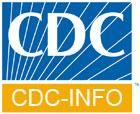Skip directly to the search box, site navigation, or content.
Division of Foodborne, Bacterial and Mycotic Diseases (DFBMD)
Blastomycosis
Clinical Features
Symptomatic infection (50% of cases) usually presents as a flu-like illness with fever, chills, productive cough, myalgia, arthralgia and pleuritic chest pain. Some patients fail to recover and develop chronic pulmonary infection or widespread disseminated infection (affecting the skin, bones, and genitourinary tract). Occasionally affects the meninges.
Etiologic Agent
Blastomyces dermatitidis.
Reservoir
Moist soil enriched with decomposing organic debris. Endemic in parts of the south-central, south-eastern and mid-western United States. Microfoci in Central and South America and parts of Africa.
Incidence
1-2 cases per 100,000 population in areas with endemic disease.
Sequelae
Permanent lung damage with chronic disease. Mortality rate is about 5%.
Transmission
Inhalation of airborne conidia (spores) after disturbance of contaminated soil.
Risk Groups
Persons in areas with endemic disease with exposures to wooded sites (e.g., farmers, forestry workers, hunters, and campers).
Surveillance
Reportable in a few states in areas with endemic disease. No national surveillance exists.
Challenges
Improving understanding of sources and routes of transmission from the environment. Developing more sensitive and specific tests for diagnosis.
Content Source: National Center for Zoonotic, Vector-Borne, and Enteric Diseases (ZVED)
Program Contents
Contact Information

